Margarita Salas: "The fago Phi29 has given us great satisfaction"
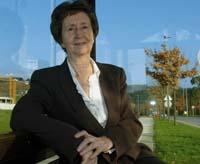
On the other hand, although small, it is quite complex. We wanted to study the mechanisms of replication of genetic material and control of gene expression, as well as the morphogenesis of the virus. That is, we wanted to know how the virus is formed from its components, proteins and DNA. The complexity of the virus, therefore, was interesting for the study of morphogenesis.
The third reason is that we wanted uncompetitive research. In fact, we were about to return from the United States to Spain and we knew that the return would be very hard. Therefore, we did not want to compete with the investigations that were being conducted in the United States as elsewhere, because we were not in similar conditions.
I mean 1967 and I think that at that time Spain was the scientific desert. Starting with a research topic, training researchers, equipping a laboratory… all that was very difficult. That's why we wanted a theme as exclusive as possible to avoid competition.
Well, Bacillus subtilis and other bacteria of the genus Bacillus are infected, but it is not so common. To find them you have to look for them. A group of American researchers isolated several viruses, including this one. They published a work in which the photograph of the fago appeared using an electronic microscope and the measurement of its DNA. When we saw that work we thought it was a wonderful model for when we wanted to.
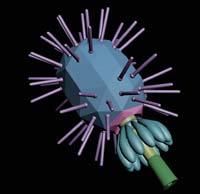
Yes, we made really important discoveries. Among other things, we first found the replication initiating protein and for the first time we found that DNA could be replicated by a initiating protein.
Later we discovered DNA polymerase and realized that by its characteristics it is ideal for amplifying DNA and other applications.
That is. We were not looking for applications and yet it came about. It arose from the basic research of a virus, seeing how it was replicated, finding the enzyme that replicates it (i.e., DNA polymerase) and seeing that this polymerase has very interesting characteristics and truly suitable for DNA amplification.
Well, this polymerase DNA has been used in many sequences, especially to amplify DNA. When there is little amount of DNA, to be able to sequence it first it is necessary to amplify it, that is, make many copies. And for amplification this DNA polymerase is frequently used for subsequent sequencing.
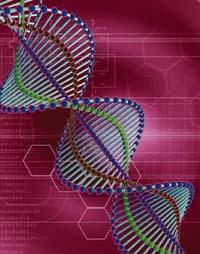
Yes, there is a certain obsession with applied research. But, in my opinion, it is not true that on the one hand there is basic research and on the other applied; I think there is basic research and its applications.
The truth is that I have always had funding to investigate the phi29 fago, perhaps because we have made important discoveries. We have published our work well in specialized international magazines... In short, this fago has been really fruitful.
I am especially happy with these two things. On the one hand, the discovery of the extreme protein associated with DNA. It was later found that it was on both sides and that it was subsequently the initiator, the first or initiator of DNA polymerase replication. This discovery was completely new, a replica mechanism that was not known until then.
In addition, other viruses of health interest, such as adenobirus, which cause respiratory diseases, and polio virus, replicate their genetic material similar to phago phi29. This was also the result of basic research, but had consequences on applied research, as it could be extrapolated to other viruses. Anyway, we weren't really looking for the extreme protein (smiling).
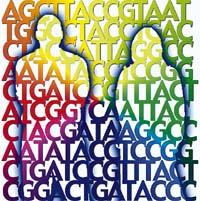
Another achievement that makes me very happy is the discovery of DNA polymerase. This was also the result of basic research. By its characteristics, we saw that it was exceptional. For example, it is extremely effective: It has capacity to copy 70,000 pairs of bases without separating and is able to open double helix. The rest of DNA polymerase cannot, they need additional proteins that give the enzyme the ability to open the double helix.
Yes, she alone does everything (laughs). And this being small! Phi29 DNA polymerase is smaller than other polymerase, but, however, it has found alone the way to open the double helix and be much more effective than others.
I work at the Severo Ochoa of Molecular Biology and we continue with this fago. This year we turn 40 years old researching the fago. Next October 19 we will hold a symposium with all the people who have passed through my laboratory, to know what each one is doing now and to remember their times.
Of course. When we returned to Spain in 1967, there were no grants for research. What happens is that we came with American help and thanks to it we started working in Spain. If not, we could not investigate it here.
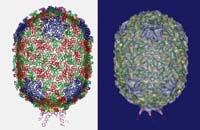
That is. That has also been a big change.
We are about forty members of the Academy, four of them scientists. We are part of the Scientific and Technical Language Commission and met on Tuesday morning to discuss scientific words. They can be, for example, new words to enter in the dictionary. We have to decide how they will come in and what definition. Or they can be obsolete words that need to be stopped and changed, or redefined... It is a continuous work.
A lot. Most scientific words are invented in English. What needs to be done in time is: Translate the words we want to include in the RAE dictionary before entering everyday life. There are many words introduced from English, such as a scanner. Everyone says it, and that is inevitable. In some cases they adapt to Spanish and instead of scanner is said and writes scanner.
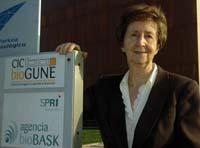
Yes, it happens with many words. We started using English and then it is difficult to translate it. On the other hand, English is very direct and short, very precise. And many times I find it easier to write something scientific in English than in Spanish, because it takes up more space and I need more time. Instead, in English, with two words it is sufficient and clear.
Very much, yes. I'm not an expert at it and had to do a lot of documentation to prepare the conference. But it is true that I like it a lot and I try to be up to date. I want the genetics and genetic language of language.
Buletina
Bidali zure helbide elektronikoa eta jaso asteroko buletina zure sarrera-ontzian











